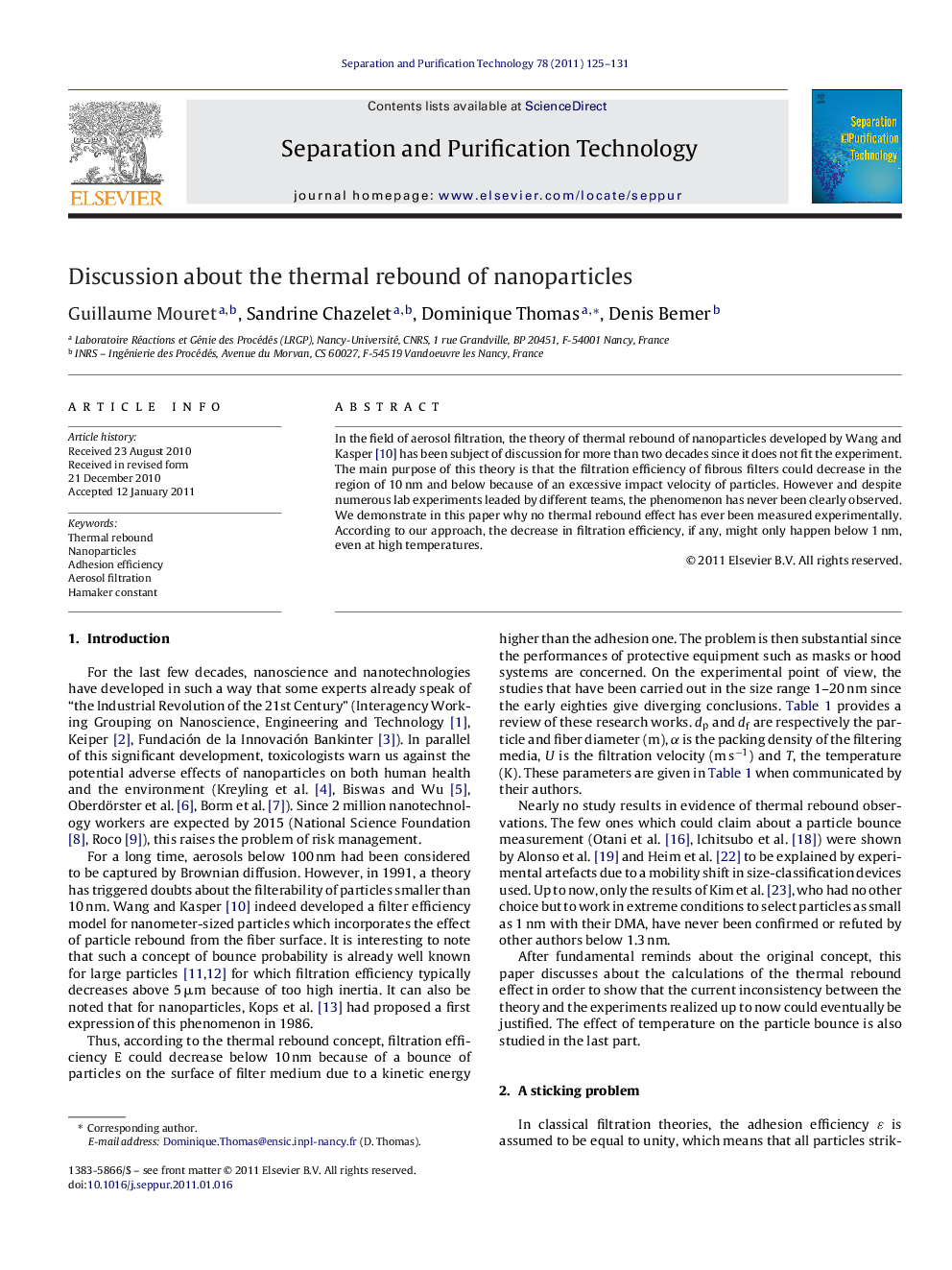| Article ID | Journal | Published Year | Pages | File Type |
|---|---|---|---|---|
| 642717 | Separation and Purification Technology | 2011 | 7 Pages |
In the field of aerosol filtration, the theory of thermal rebound of nanoparticles developed by Wang and Kasper [10] has been subject of discussion for more than two decades since it does not fit the experiment. The main purpose of this theory is that the filtration efficiency of fibrous filters could decrease in the region of 10 nm and below because of an excessive impact velocity of particles. However and despite numerous lab experiments leaded by different teams, the phenomenon has never been clearly observed. We demonstrate in this paper why no thermal rebound effect has ever been measured experimentally. According to our approach, the decrease in filtration efficiency, if any, might only happen below 1 nm, even at high temperatures.
Graphical abstractFigure optionsDownload full-size imageDownload as PowerPoint slideResearch highlights► Thermal rebound model of Wang and Kasper is improved with the Bradley–Hamaker approach. ► Influence of particle–fiber properties on thermal rebound is studied. ► Transition size between nanoparticle collection and thermal rebound is below 1 nm. ► Temperature slightly increases transition size.
